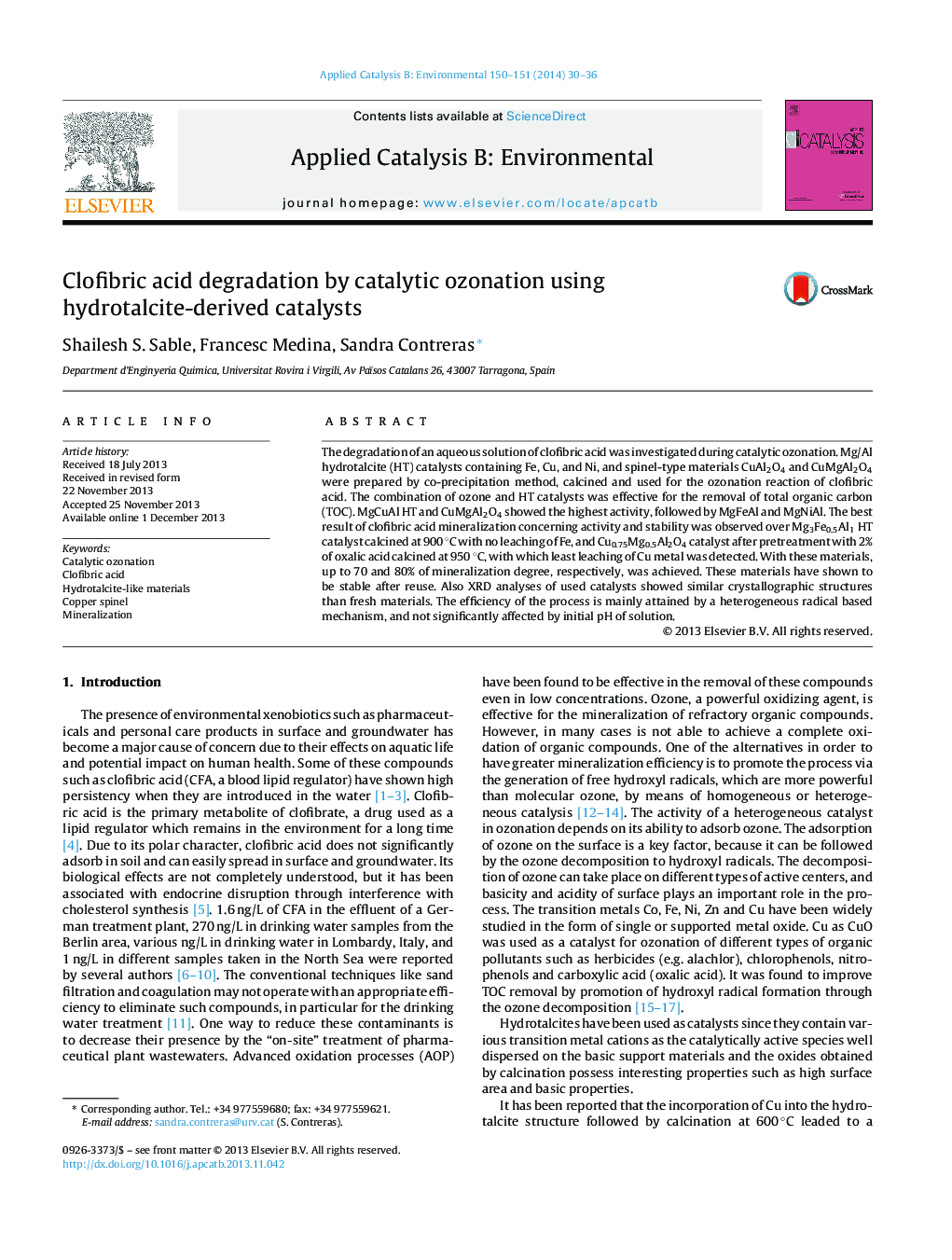| Article ID | Journal | Published Year | Pages | File Type |
|---|---|---|---|---|
| 45906 | Applied Catalysis B: Environmental | 2014 | 7 Pages |
•Fe and Cu HT-derived catalysts showed a rapid and complete degradation of CFA.•Stability was improved by increase of calcination temperature and acidic pre-treatment.•Mechanism of the process has shown to be mainly heterogeneous and radical-based.•Efficiencies in mineralization achieved up to 58 and 80% after 2 and 6 h, respectively.
The degradation of an aqueous solution of clofibric acid was investigated during catalytic ozonation. Mg/Al hydrotalcite (HT) catalysts containing Fe, Cu, and Ni, and spinel-type materials CuAl2O4 and CuMgAl2O4 were prepared by co-precipitation method, calcined and used for the ozonation reaction of clofibric acid. The combination of ozone and HT catalysts was effective for the removal of total organic carbon (TOC). MgCuAl HT and CuMgAl2O4 showed the highest activity, followed by MgFeAl and MgNiAl. The best result of clofibric acid mineralization concerning activity and stability was observed over Mg3Fe0.5Al1 HT catalyst calcined at 900 °C with no leaching of Fe, and Cu0.75Mg0.5Al2O4 catalyst after pretreatment with 2% of oxalic acid calcined at 950 °C, with which least leaching of Cu metal was detected. With these materials, up to 70 and 80% of mineralization degree, respectively, was achieved. These materials have shown to be stable after reuse. Also XRD analyses of used catalysts showed similar crystallographic structures than fresh materials. The efficiency of the process is mainly attained by a heterogeneous radical based mechanism, and not significantly affected by initial pH of solution.
Graphical abstractFigure optionsDownload full-size imageDownload as PowerPoint slide
